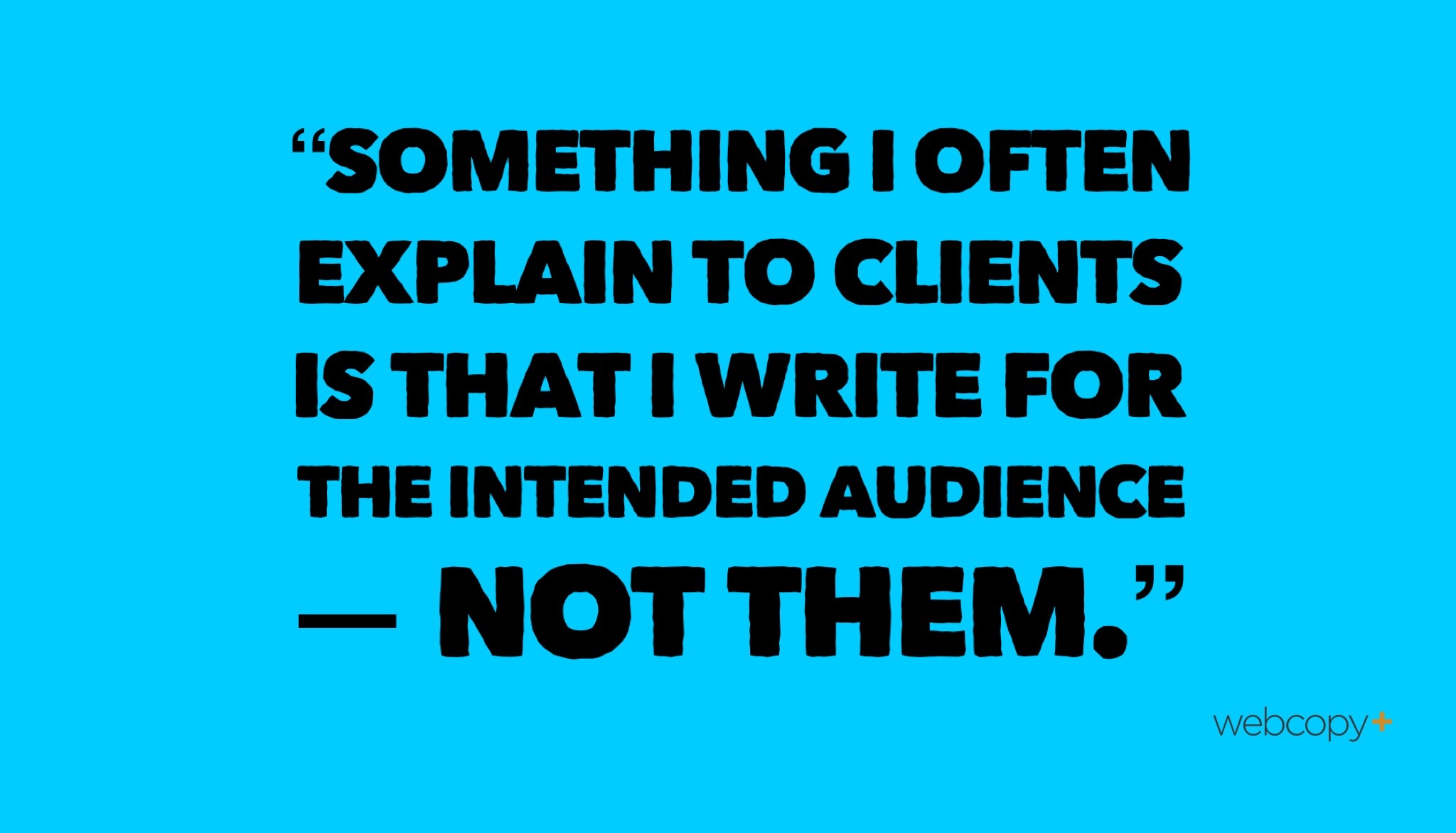
Whether you’re a content writer, designer, developer, photographer, artist — or virtually any creative — it seems we’ve all had experiences where clients unknowingly get in the way. Following a passing comment or a random article that pops up in a feed, suddenly the client starts to insist on ill-advised tactics. It can be a challenging situation, but one that can be resolved with the right approach.
The Nightmare Begins
I’ve heard several stories from designers and agencies our content agency work with, but I’ll share my own. A few years ago, we helped a research and development consultant with his website content. He requested a few minor tweaks to the proposed web copy, which I incorporated, and he was pleased. The content was set — or so I thought.
The next week, he sent me an ‘FYI’ email stating his wife (whose qualification was that “she enjoys writing poetry”) rewrote much of the content. The website content became repetitive, rambling and self-absorbed, and lost most of the keywords and optimization that was carefully integrated for search engines.
I explained how these changes would have ramifications on his business’ online presence, engagement and conversions. The client insisted the revised copy was fine, and I felt the need to push back harder.
Education is the Key
When creativity is involved, there’s often a certain level of subjectivity, which means taste and perception can be based on style, culture, exposure, desires, moods, and many other factors. As a professional, therefore, it’s important to explain to the client that specific decisions and actions are made for a reason, and then clearly provide examples and rationale.
With the aforementioned client, I explained that I wasn’t actually writing for him; I was writing for the intended audience. And by serving his audience/market well, they’d reward him by investing in his products and services. Unfortunately, many business owners and executives are guilty of communicating what they want to say versus what visitors want or need to read and hear.
There were several factors I brought up, like the fact that 80% of people scan content online; they don’t read word for word. As a result, his wife’s elongated paragraphs littered with cliches would increase his bounce rate and lose readers. I also explained how key messages were watered down, and most of the strategically embedded keyword phrases were virtually eliminated. I went through paragraph by paragraph, line by line, explaining how every modification would hurt his business.
After almost three grueling hours, he agreed to revert back to the original copy our content writers provided him.
Psychological Considerations
To set the stage for a positive outcome and nurture a lasting relationship, I made it clear I was looking out for his best interest, and making recommendations based on years of specialized knowledge and experience. It’s not a matter of debating who’s right — you’re going to lose that battle, even if you ‘win’. Every action and decision you propose must be tied to evidence — facts, figures, a case study, test, particular experience, etc.
I also acknowledged from the get-go that he’s the boss, always having final say on the content. Exhibiting that respect generally disarms the client, helping them realize this isn’t about egos — it’s about making the right decisions for the best outcomes.
In a more recent case, an entertainment client chose to override my recommendation to avoid rotating banners on the home page, a recommendation that was also supported by the designer. I pushed back twice, presenting my logic, and was met with continued resistance. I eventually explained: “Okay, as long as you know these are the possible consequences…” The client responded: “I appreciate your care and attention to detail, but we…” As I was respectful with my communications and reasoning, I was granted the same respect, and we moved forward with the project on very good terms.
The Undesired Path
When mutual patience, understanding and respect aren’t a part of the equation, things can go sideways quickly. Case in point: a design agency I referred the aforementioned consultant to had a similar experience with the client (for the record, this is before I realized he was challenging to work with, or that referral would not have happened). The client started micromanaging the work, to the point he drove to the studio, pulled up a chair beside the lead designer, and was literally directing his website design (I recall “make the logo bigger” was part of the equation).
Unfortunately, it got to the point where the agency just did what they were told so they could finish the project and get rid of the client. A painful process for the designer, with compromised results.
Give Respect to Earn Respect
Listening to and educating clients in a confident, respectful manner often goes a long way. It shows you genuinely care about your client, making them feel heard and valued. It’s also an opportunity to demonstrate your expertise and foster a deeper, long-term relationship.

Agree? Disagree? Share your thoughts and stories below.






Leave a Reply